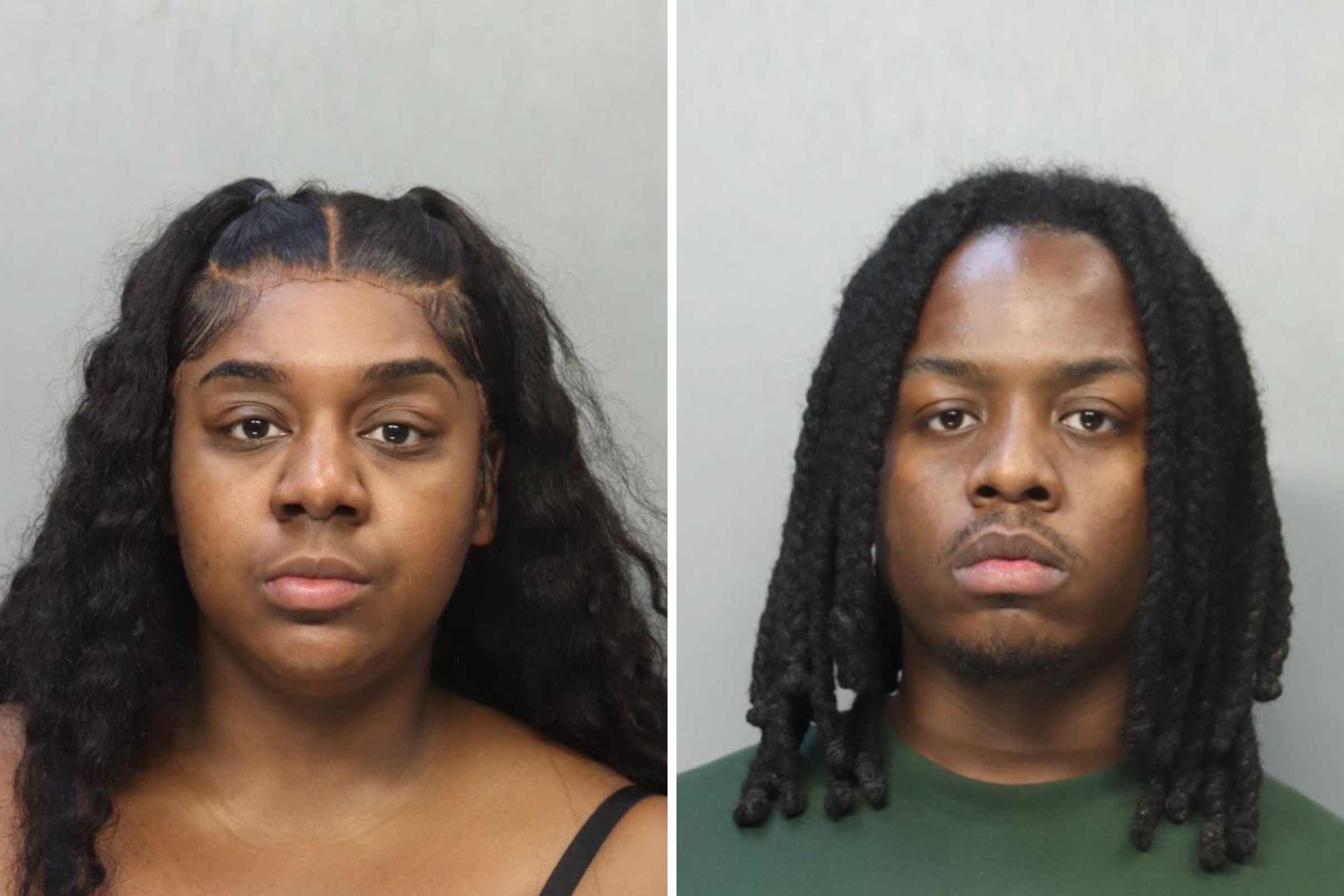Angie Landeros knew her daughter had always been shy. "Very, very shy," she says. "She always felt awkward talking to other kids her age."
Then came the COVID-19 lockdowns in March, 2020. Ten years old, Landeros' daughter began feeling unbearably self-conscious seeing herself on the computer screen during Zoom lessons. When her elementary school went to a hybrid format that required most kids to attend in person, some days she'd refuse to go. Once she had a full-blown panic attack in the car and began kicking and screaming. On another day, says Landeros, "she literally ran out the door to hide from us."
Landeros and her husband, Michael Bloch, are psychiatrists at the Yale Child Study Center, so they knew what their daughter was going through: social anxiety disorder. She wasn't the only one. According to a national survey by the U.S. Census Bureau, adults reporting symptoms of anxiety and depression on a near-daily basis jumped to 41 percent in 2021, from 11 percent in 2019. (It dropped to 32 percent in 2022, still nearly triple the pre-pandemic level.) Nearly eight in 10 adults said COVID-19 was causing significant stress in their lives, according to a survey by the American Psychological Association (APA).
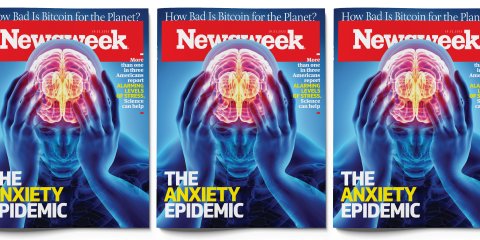
The pandemic is only one of many anxiety-provoking headlines. Climate change has 59 percent of young people feeling very or extremely worried, an international survey published in the Lancet medical journal found. School shootings have 57 percent of teens and 63 percent of adults somewhat or very worried, according to a Pew Research Center survey. The 2020 election was a "significant" source of stress for two-thirds of adults in the U.S., a survey by the APA found, compared to just over half in 2016. The economy is a major source of stress for 87 percent of Americans and the Russian invasion of Ukraine is stressing out 80 percent of U.S. adults, a Harris poll found early this year.
Anxiety has become so widespread—and, to many Americans, downright disabling—that in September the U.S. Preventive Services Task Force, an independent panel of experts in primary care and preventative medicine, recommended that all adults under age 65 get screened for the condition, which could bring much-needed treatments to many more people.
The sheer presence of highly anxious, high-profile celebrities may also be removing some of the stigma associated with anxiety. Pop singer Shawn Mendes has opened up about his crippling anxiety, which led him to cancel his world tour in July. Justin Bieber likewise scrapped his concert tour in September, admitting that he has battled anxiety attacks for two decades. Even Oprah Winfrey has confessed to suffering a nervous breakdown due to the stress over her many show business commitments. In the past year, big-name athletes Simone Biles (gymnastics), Kevin Love (basketball), Michael Phelps (swimming) and Naomi Osaka (tennis) have openly discussed their struggles with anxiety.
Fortunately, scientific insight into what causes anxiety, and the range and effectiveness of available treatment options, is also on an upward trend. Anxious temperaments, recent studies have found, run in families, not only because of common genetics but also child-rearing styles, which have much to do with anxiety in children. The most effective treatments, new studies show, is not with lengthy courses of psychotherapy—and definitely not with cannabis. Instead, doctors and scientists who specialize in anxiety now recommend relatively short-term therapy that helps children confront what makes them anxious, rather than shrink from it. As for medications, most experts advise against so-called "anti-anxiety" drugs, strangely enough, because of their side effects. Antidepressants, they say, work far better.
"When I began my career in the 1980s, there was nothing known about how best to treat anxiety disorders," says Dr. Wendy Silverman, professor of child psychiatry and director of the Yale Child Study Center's Anxiety and Mood Disorders Program. "We've made enormous progress since then."
More people may soon find out firsthand about the progress in anxiety treatments. The task force's recommendations, together with similar ones issued last spring for children, means that physicians may soon routinely ask children and adult patients under age 65 about anxiety, just as they currently do about cigarette smoking and alcohol use. Although the recent recommendations for adults is not yet final—the public has until October 17 to make comments—the goal is to bring the latest treatments to bear on this acute mental health problem.


An Anxiety Thermometer
The impetus behind the task force's recommendations are some startling statistics: more than 26 percent of men and 40 percent of women in the U.S. will develop an anxiety disorder sometime during their lifetime, the group noted. Perhaps even more alarming, less than one percent of those cases are treated within a year after they first arise, according to one study. In the U.S. the median time from onset of the disorder to treatment was a whopping 23 years. From 2008 to 2019, between 35 percent and 45 percent of adults who had attempted suicide did not receive mental health care, the report said.
Once the task force's recommendations are made final, primary care physicians will add "anxiety disorder" to the list of conditions that they screen for.
The screening tools—questionnaires administered by doctors—work like a thermometer for anxiety. They are designed to measure how severe a person's anxiety is, to distinguish between people who have an anxiety disorder and those whose anxiety falls in the "normal" range. Indeed, the first step to dealing with anxiety is to recognize that not all anxiety is bad. Everyone feels anxious at times, and that can be a good thing.
"It keeps you from walking off a cliff," says Dr. Nathan Fox, director of the Child Development Lab at the University of Maryland. "It gets you going. It alerts you to danger, and that can save your life. Whether you're working on a business presentation or walking into a social situation, feeling a bit anxious can help you stay focused and get prepared."
In fact, Fox says, being worried about the state of the world these days is appropriate. "It's only when that worry impairs your daily life—your ability to go to work, to eat properly, to have social relationships—that it becomes a problem," he says.
The still-current 2013 edition of the Diagnostic and Statistical Manual of Psychiatric Disorders [DSM] , the official guide to diagnosing psychological disorders, says that generalized anxiety disorders involve "excessive" anxiety and worry that occurs for more days than not, lasts for at least six months and regards a number of events or activities, such as work or school. The person must find it difficult to control the worry, and it must be associated with at least three of six symptoms: restlessness or feeling on edge, being easily fatigued, having difficulty concentrating or irritability, muscle tension and disturbed sleep. The task force identified seven types of anxiety disorders: generalized anxiety disorder, social anxiety disorder, panic disorder, separation anxiety disorder, phobias, selective mutism (an inability to speak in certain social situations) and anxiety "not otherwise specified."
Physicians would draw on screening tools—mainly questionnaires—designed to identify one or more of these conditions. A key early step in the scientific study of anxiety was the development of scales to measure levels of anxiety. In the early 1980s, psychologist David H. Barlow at Boston University developed the Anxiety and Related Disorders Interview Schedule, updated versions of which are still used today. Soon after, Silverman developed one specially for assessing anxiety in children that is still used in clinical trials. "You need to measure and define something carefully before you can study it," she says.
Doctors would also take into account other factors that raise a person's risk of developing an anxiety disorder. For instance, women are more likely than men to suffer an anxiety disorder, as are Black people, divorcees and those who have lost a spouse. Psychological and social factors also play a role—such as living through a pandemic. And anxiety, the task force noted, often overlaps with depression. In fact, two-thirds of people with a depressive disorder also have an anxiety disorder.
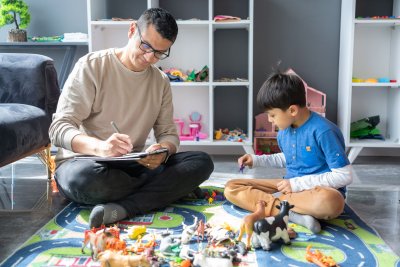


Born This Way
Lady Gaga was on to some-thing when she sang one of her biggest hits, "Baby, I was born this way." In the last few years scientists have found that precursors of anxiety disorders make their first appearances in infancy, in the form of "behavioral inhibition"—scientific jargon for a sensitive, fearful temperament. In 2016, Dr. Daniel Pine, an investigator at the National Institute of Mental Health, wrote that such infants "display heightened reactions to novelty and heightened sensitivity to stimulus variations....In toddlerhood, they withdraw from novel or unfamiliar social situations...This tendency evolves to leave the inhibited child less assertive and more prone to rejection than their peers, catalyzing the growth of negative self-perceptions."
By no means do all young children with such a temperament grow up to have an anxiety disorder, Pine says. In fact, scientists have found that there is about a 50 percent chance that a child will grow out of it. Even so, a 50 percent risk is still five times higher than the average child's risk of having an anxiety issues as an adult.
On the other hand, being born sensitive and inhibited can be an asset when well channeled, Fox says. "There's nothing wrong with being reticent or quiet or vigilant," he says. "There's a place in the world for people who are not exuberant and outgoing, who are contemplative. As I've watched the children in my studies grow up to see what paths they've taken, many of the shy and anxious ones found niches for themselves. They chose careers as writers, chefs, computer scientists, musicians."
Humans aren't the only species in whom inhibited or outgoing temperaments can be seen from birth. Virtually all animals exhibit such differences—including rats, according to a study published this past June. And as any pet owner knows, dogs and cats are likewise born with a temperament that can leave them prone to anxiety.
"I have always had labrador retrievers—they're the most social, exuberant, friendly dogs you can ever have," Fox says. "My sister has an English cocker spaniel. He's hyper frenetic and extremely skittish and wary of anything novel or strange. Temperament is seen throughout the animal kingdom."
Not surprisingly, such inborn traits are based in part on genetics. In June, Silverman co-authored a scientific paper describing rare genetic variants associated with nearly twice the risk of having a childhood anxiety disorder. Another study, published in October, found a genetic difference in how law students responded to the stress of studying for their bar exams.
That's no surprise to Landeros, who says that in the case of their anxiety-prone daughter, the apple didn't fall far from the tree. "Both my husband and I are introverts," she says. "I'm the one who makes more of an effort to socialize. Our daughter is much more like Michael. It's amazing how she is like a little clone of him."
Dr. Ned Kalin, chair of the department of psychiatry at the University of Wisconsin School of Medicine and Public Health and editor-in-chief of the American Journal of Psychiatry, has been studying the genetics and neurobiology of stress and anxiety for decades. One of the big surprises he's uncovered is that the amygdala, the brain structure long thought to be the seat of fear, is not genetically associated with anxiety.
By studying three generations of families in which anxiety disorders have been passed down, he found that three other areas of the brain serve as a kind of anxiety network. His findings point to new areas in the brain that scientists might target for the development of medications.
"You hear a lot about the amygdala, but our research and the research of others has demonstrated that it's not just one place in the brain that is associated with anxiety disorders," Kalin says. "It's a whole network of regions across the brain, including the prefrontal cortex, where we regulate our responses to fear and threats. The prefrontal cortex talks to the other, deeper structures and asks: How scared and anxious do I really need to be? It's that cross-talk that we think is critical for regulating anxiety and some other emotions."
Kalin emphasizes, however, that genetics and biology account for less than half of the risk that a person will develop an anxiety disorder. "Only 30 to 40 percent of the risk can be accounted for by heritability," he says. "Which means environment is really critical as well."

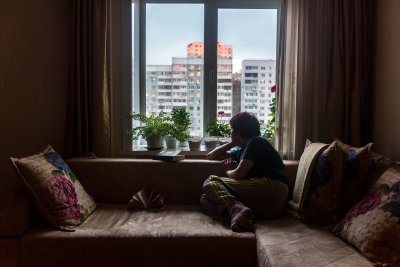

Raising the Anxious Child
How parents raise an anxiety-prone child, scientists have found, can make a huge difference in how they develop into adulthood. Paradoxically, the children whose parents try the hardest to protect their sensitive natures are the very ones whose anxiety is likely to grow and persist. An extraordinary study by Fox, for instance, found that just placing a shy, inhibited child in preschool can help them grow out of their anxious disposition. Nine out of 12 kids whose parents exclusively cared for them at home during their first two years of life, he found, remained shy and inhibited as they grew older, whereas nine of 13 placed in preschool grew bolder and more confident.
It's understandable that parents want to protect their children from situations that frighten or upset them, says Dr. Anne Marie Albano, founder of the Columbia University Clinic for Anxiety and Related Disorders. But, she says, "if we keep rescuing them and fixing things for them, their anxiety perpetuates and grows. The mom who takes her child out of a classroom because someone was mean to them or the kids won't play with them, that child doesn't learn how to manage their emotions and develop the problem-solving skills to get what they want out of that situation."
Silverman calls it the "protection trap."
"No parent feels comfortable when their child is afraid and anxious and distressed," she says. "A parent's natural tendency is to allay those fears, to take them out of a situation that frightens them. But then the child only learns to avoid whatever makes them nervous."
That avoidance is a key characteristic of the overly anxious children, and a key target of therapists' efforts to help. "A lot of anxiety actually follows from the avoidance," Pine says. "When children and adults can overcome their avoidance and face their fears, the anxiety often goes away." He quickly adds: "I don't mean to make it sound so easy to do. That's where a therapist comes in. A therapist helps you face your fears in a way that is appropriate."
For Landeros' daughter, therapy aimed at relieving her social anxiety disorder began at 4 p.m. on March 15, 2021. Dr. Carla Marin, the Yale clinical psychologist who treated her, practiced the gold-standard treatment shown in clinical trials to be most effective in relieving anxiety: cognitive behavior therapy. CBT, as it's known, involves exploring and overcoming the irrational and counterproductive thoughts and beliefs underlying a disorder, and then focusing on changing the associated behaviors, slowly but surely.
Originally developed as a treatment for depression, it is now widely used to treat not only anxiety but also post-traumatic stress disorder, substance abuse, eating disorders and more. Studies have found that two-thirds of adolescents treated with CBT will be free of an anxiety disorder after three to four months.
The main component of the treatment Marin offered, she says, was exposure exercises—having her young patient gradually face situations that she had been avoiding. "Sometimes during sessions, I would invite in a research assistant to do role playing, where she would have to introduce herself, talk about her likes, her hobbies," Marin says. "Outside sessions included activities like going to the library and asking about a book rather than relying on her Mom or Dad to get it, or going to Dairy Queen and ordering for herself rather than her parents ordering it."
Eventually, over the course of that spring, they moved up to having her go to school for just an hour or two, then for half a day, and eventually for a full day. By the time the 2021–22 school year began, she was attending every day.

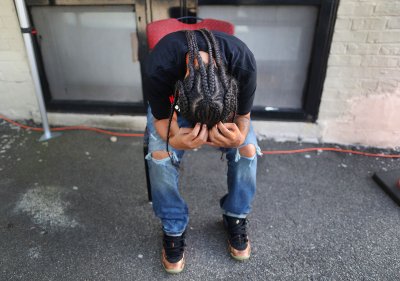
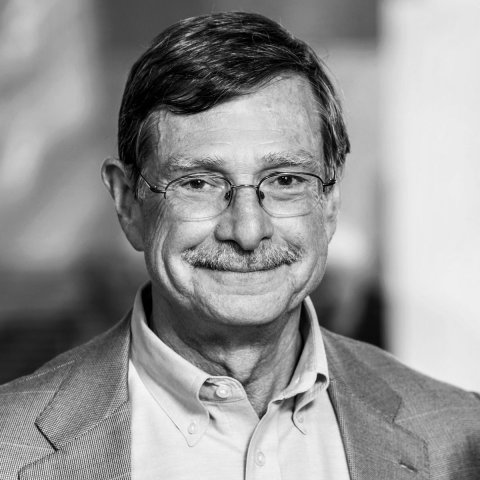
Science-Based Treatments That Work (Usually)
CBT and exposure therapy are the first-line treatment for over-anxious adults, too, but other treatments have also been shown to help. Acceptance and commitment therapy, for instance, prompts people to become more accepting of the situations and issues they worry about, and to commit themselves to the values they hold dear—such as living in a state of tranquility and equilibrium rather than severe anxiety.
"A huge part of anxiety is not accepting what you're feeling," says Dr. Jenny Taitz, a psychologist affiliated with the University of California at Los Angeles. "Acceptance is a core skill. You have to be willing to accept the thoughts and feelings that come on the path to doing things you value."
Taitz had to practice what she preached back in 2017, when she and her family moved from their home in New York City to Los Angeles. "I had to be willing to accept the uncertainty of what would come," she says. "It's okay to feel uneasy and unsure. That doesn't mean it's the wrong direction."
Another promising treatment is called attention bias modification. People who are highly anxious, studies have found, tend to fixate on things that scare or worry them. When tested on computerized tasks that require them to focus on the center of the screen, for instance, they are more easily distracted than non-anxious people when images of angry or suspicious people appear for a blink on the periphery of the screen. Training them to ignore those images has been shown to transfer to real-life reductions in anxiety.
"Attention training grows out of an extremely strong and extremely rich neuroscience literature," says Pine. "Some people think it's already proved to be clinically helpful. I tend to be a skeptic. It's still early days. But of all the work I've done in my career, it's the most exciting."
Of course, no matter the type of therapy, not everyone is willing or able to go through the process. For them, as well as for people undergoing therapy, medication is often part of the treatment plan. Drugs known as benzodiazepines—including Xanax, Klonopin and Valium—were developed and marketed specifically to treat anxiety, but they have fallen out of favor. One problem is their potential for abuse and addiction; another is that they can interfere with exposure therapy, by making patients so mellow that their anxiety vanishes—but only while they're on the pills.
"I would never encourage anyone to consider benzodiazepines," says Taitz. "If you're facing a situation that would normally make you anxious, but the drug leaves you feeling calm, there's no benefit."
Pine's view is more nuanced. "They can be helpful in someone feeling acutely anxious, who can't even get out the door to go to work," he says. "But they are definitely considered second-line therapy, because their side-effect profile is generally higher than for antidepressants."
Ironically, many antidepressants have been shown to work better for anxiety than they do for depression—and to work better at reducing anxiety than the benzodiazepines that were marketed to treat anxiety. Drugs like Prozac, Zoloft, Luvox or Simbalta, says Pine, are now considered first-line drug treatments for anxiety disorders.
One of the most surprising new findings about the treatment of anxiety is that marijuana doesn't appear to help—and might make things worse. "There are no good studies of cannabis as a treatment for anxiety," says Dr. Jodi M. Gilman, an associate professor at Harvard Medical School and director of neuroscience at Massachusetts General Hospital's Center for Addiction Medicine. "None. Because I've looked."
In March, Gilman published a randomized clinical trial involving 186 people with chronic pain, insomnia, anxiety or depression. Two-thirds were given a medical marijuana card at the beginning of the study, and the other third had to wait 12 weeks before receiving one. The group who received the medical marijuana card immediately, Gilman found, "reported no significant changes in pain severity or anxiety or depressive symptoms," though they did have fewer symptoms of insomnia.
The biggest change was that the marijuana users were nearly three times more likely than the group still waiting for their card to develop what doctors call "cannabis use disorder," meaning they felt they couldn't stop or reduce using it even though it was causing problems in their life. The effect was worst, sadly enough, in the very people whose chief reason for entering the trial was their concern about anxiety or depression.
While many users insist that cannabis is their go-to relaxant, Gilman says she compares it to alcohol. "If a person drinks a glass of wine every night, it might reduce their anxiety," she says. "But that doesn't mean wine is a medicine."
For those seeking help, Pine and others say, the first stop is a primary care physician. Academic medical centers devoted to the study and treatment of anxiety disorders can also now be found at universities across the country. One problem they can't solve, however, is the tsunami of adults and children seeking help for anxiety and depression provoked by the many stress-inducing events in the news these days. For instance, people currently seeking help at the University of Pennsylvania's Center for the Treatment and Study of Anxiety typically wait four to six weeks for an evaluation, and another four to six weeks before they can start therapy.
"Getting access to treatment was bad enough before the pandemic, and it's only gotten worse," says the center's director, Dr. Lily Brown. "We keep adding staff but demand just keeps growing."
For research scientists, meanwhile, the chief challenge is figuring out why some people who receive the best treatments available for anxiety disorders find little relief. Only about half of adults, in fact, will achieve a complete remission of their symptoms, according to Dr. Alexander Talkovsky, chief of NIMH's Anxiety Disorders Research Program.
"Why do our best treatments still fail to work for so many people?" he wonders. "That's what I spend most of my time thinking about. A lot of the researchers who submit grant applications to my program wonder about it. All I can say is we're working on it."
Even when the treatments don't cure anxiety disorders, they usually help somewhat. Landeros' daughter, for instance, is still anxious but has recovered enough to attend school every day since beginning weekly sessions with Dr. Marin. "She has done really, really well this past year," Landeros says. "It's not like she's cured, but she's definitely in a better place compared to where we were two years ago."
Over the past two summers, Landeros' daughter even attended a theater camp for kids. "So okay, she's not talking on the phone or having sleepovers," Marin says, "but she's doing all these other amazing things. She's made amazing progress."
Much the same could be said for the fast-evolving science of treating anxiety disorders.














